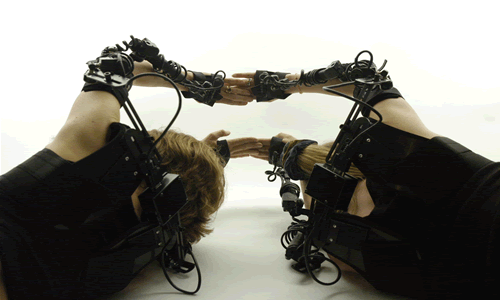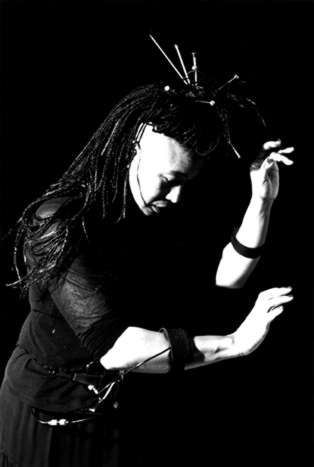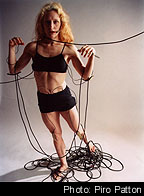Okay, wannabe cyborgs, you know you want it: no matter the price, you have to have a robotic armature on your body that sends MIDI data. The latest, via Engadget: the Gypsy MIDI controller. (Wait a second, the gypsy MIDI controller? Now, that doesn’t sound very cyborg. Marketing department, please?) It’ll cost you US$855 an arm, or US$1,675 for the whole suit (best value, as the marketing people would say). Sound pricey? No, that’s about typical in the history of these kind of mechanisms. Speaking of which, despite their claims, this is not the first device of this kind. But it can perform wirelessly, and comes configured out of the box for DJs — now that’s new. Let’s take a look at this latest entry, and see which other attempts I can remember . . .

Digging through to the actual product page for this, there are some interesting features. It is sending only MIDI, which is a little disappointing given the accuracy of data required for real motion capture; I wonder if they’re using the full data range of MIDI or just 127 values per sensor. But it’s a wireless device; many previous designs were wired. Its software looks very intuitive, rather than the homebrew Max/MSP patches that usually accompany such devices. There are presets for everything from Pro Tools to Traktor DJ. And, maximizing your value, it can moonlight as a motion capture device with Autodesk Motion Builder, in case you happen to be developing a computer game or shooting a sci-fi motion picture.
Be sure to check out the videos on the homepage to see this in action.

Now, it’s time to play “Where have we seen this before?” In fairness, the Gypsy MIDI folks claim only to be the first “commercial” product. Depending on how broadly we define commercial, though, that would include the Body Synth, developed in 1994 by Chris Van Raalte and Ed Severinghaus. I’ve seen several people using these, usually dancers, but the most “famous” user is probably singer/electronic musician Pamela Z (pictured here looking a bit like Edward Scissorhands). Another device that has made the rounds (not commercially, but I believe used by more than one artist) is the MIDI Dancer, developed and used by the Troika Ranch dance company. Like the Gypsy MIDI, this device sends data wirelessly.
So, yet again, what’s old is new again. These devices are looking like a bargain buy compared to the US$2500 Lemur multitouch touchscreen and, let’s face it, also cost less than a lot of high-end synths from Roland, Yamaha, and Korg. And body sensors are arguably more fun, since they require you to move about to produce sound. But while the hardware designs have been repeated, I think there’s a lot more progress to be made in this area.

First, these designs are all fairly intrusive. Portable — well, sort of, but they’re not comfortable to wear. And they look a bit like a pile of electrical cords fell on you; hardly wearable high-tech fashion. (The artsy shot here is the choreographer of Troika Ranch, tangled in her sensor suit.)
The next, and more important problem, is software. While we’ve come up with clever ways of capturing motion capture data for animation, it’s not at all clear how to best use body mappings for sound and music. I still believe that a great instrument should sound terrific, and sound unique, even if you don’t see how the sounds are being produced and controlled. I’d be really interested to see how they mapped the presets for Gypsy MIDI here. The Traktor DJ settings work well, but it’s mostly for show — the performance in the video is cool, but mapping a filter and crossfader is a little too pedestrian to have you screaming “I have to own this!”
To me, these are exciting problems, however. Sensor tech is obviously readily available: now the interesting question is, how can we make them musically successful?
Come on, cyborgs, let’s get on this.
(And readers, I’m sure I’ve missed other body control systems, so let’s put together our collective intelligence and flesh out my list!)